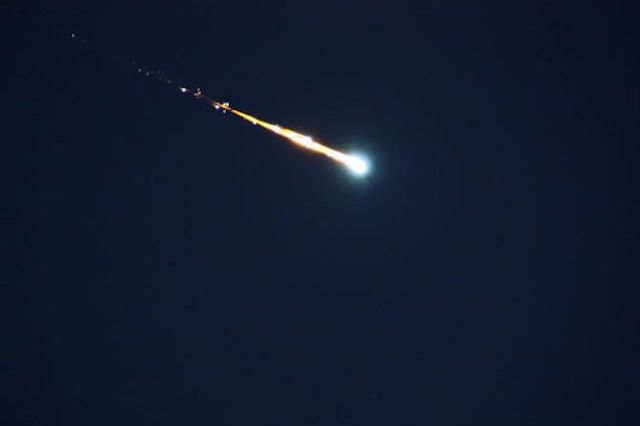
Stock image
Crystal McClurg, an amateur astronomer since she was a child, knows what to expect when she looks up at the night sky.
At 12:50 a.m. Sunday, however, she saw the unexpected.
McClurg, looking west from her home in Union, observed an object racing across the night sky. It then appeared to crash into a mountain west of La Grande.
"It was a huge green fireball," McClurg said. "Then it turned yellow and broke apart into four or five pieces."The Union resident, who was alone, then let her emotions get the best of her.
"I screamed, 'Did anybody see that?'" she exclaimed.
The skywatcher, who said the meteor had a tail that extended for about a quarter of a mile, had reason to be excited. In the more than three decades she has been watching the sky, she said she has never seen anything close to what she saw Aug. 16.It is not unusual for a meteor to display the variety of colors McClurg described, according to Melinda Hutson, curator of the Cascadia Meteorite Laboratory at Portland State University. Hutson also said meteors often appear to break apart.
Hutson said she believes the object McClurg saw was either a meteor or a piece of man-made space debris, such as metal off a satellite.
Hutson said when the fireball was first spotted, it was probably more than 30-45 miles above the Earth and it likely disappeared after it fell below the 30-mile mark."It was not moving fast enough to be incandescent (after the 30-mile mark) because the atmosphere was slowing it down," she said.McClurg said she could not hear or smell the fireball. Jim Todd, director of space science education at the Oregon Museum of Science and Industry, said this is an indication that it was much farther away than it appeared. He said if other reports of the sighting are received from surrounding states, scientists might be able to determine the fireball's route via triangulation.
Hutson said she believes the meteor or space debris probably burned up before it hit the ground. She said typically fireballs such as the one McClurg reported appear much closer than they are but turn out to be hundreds of miles away.
McClurg reported her siting to the
American Meteor Society.
Meteor sightings reported in Northeast Oregon in recent years include one that appeared at 5:31 a.m. on Feb. 19, 2008. The late Dick Pugh, who was with the Cascadia Meteorite Laboratory, told The
Observer in 2008 the meteor hit between Tollgate and Elgin. No one has reported finding remnants of that meteor, which would have been a meteorite once it hit the Earth.
Meteorites can fetch a good price. Meteorites from the moon and Mars can go for $1,000 a gram, but even common meteorites sell for a few dollars a gram.

Reader Comments
to our Newsletter